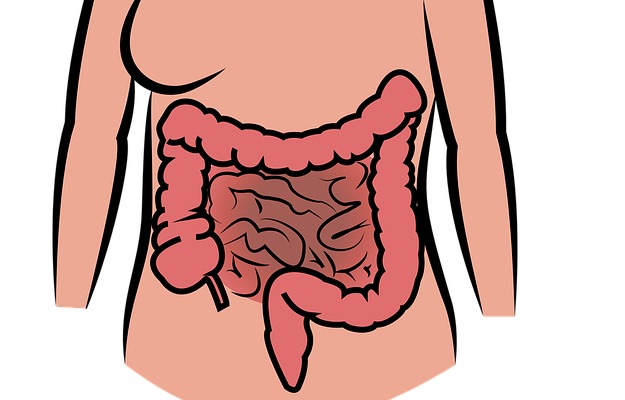Malabsorbtion syndrome: An Overview
Malabsorbtion syndrome: An Overview

Author: Muntazim Aalam
(Karaganda Medical University)
Aim:
An understanding about malabsorbtion syndrome.
Abstract:
Malabsorption syndrome refers to a group of disorders characterized by impaired nutrient absorption in the digestive tract. This article provides an overview of malabsorption syndrome, including its causes, diagnostic evaluation, and management strategies.
Keywords:
Nutrient absorption, Celiac disease, Lactose intolerance, Pancreatic insufficiency, Bile acid malabsorption, Short bowel syndrome, Tropical sprue, Whipple's disease.
Introduction:
Malabsorption syndrome is a condition in which the body is unable to absorb necessary nutrients from the food that is consumed. This can occur due to a variety of factors, including intestinal disorders, enzyme deficiencies, chronic infections, and other conditions that impair absorption from the intestines.
Malabsorption syndrome can cause a range of symptoms, including diarrhea, weight loss, fatigue, abdominal pain, bloating, and nutrient deficiencies. These deficiencies may lead to anemia, osteoporosis, and other health problems.
Treatment for malabsorption syndrome usually involves addressing the underlying cause, along with dietary changes and nutritional supplementation to help boost nutrient intake. In some cases, medications or surgery may also be necessary.
Symptoms:
Malabsorption syndrome can vary depending on the underlying cause, but some common symptoms include:
1. Diarrhea: Frequent and loose bowel movements are one of the most common symptoms of malabsorption syndrome. Diarrhea can be chronic or intermittent.
2. Abdominal bloating and cramps: People with malabsorption syndrome often experience bloating and discomfort in the abdomen. This can be due to gas accumulation and gastrointestinal motility disturbances.
3. Weight loss: Unintended weight loss can occur in people with malabsorption syndrome due to the loss of nutrients and calories in the feces.
4. Fatigue: Chronic fatigue or weakness can be a symptom of malabsorption syndrome due to nutrient deficiencies that affect energy metabolism.
5. Nutritional deficiencies: Malabsorption syndrome can lead to deficiencies in certain vitamins and minerals, such as vitamin B12, iron, and calcium, resulting in anemia, osteoporosis, and other health problems.
6. Stunted growth and development: Children with malabsorption syndrome may experience delayed growth and development due to nutritional deficiencies.
7. Skin rashes or changes: Malabsorption syndrome may lead to skin changes, such as dryness, itching, or rashes, due to nutrient deficiencies.
Types:
Malabsorption syndrome refers to a group of disorders that affect the body's ability to absorb nutrients from the digestive tract. These disorders can be classified into various types based on their underlying causes. Here are some common types of malabsorption syndromes:
1. Celiac disease: Celiac disease is an autoimmune disorder characterized by an intolerance to gluten, a protein found in wheat, barley, and rye. In individuals with celiac disease, the consumption of gluten triggers an immune response that damages the lining of the small intestine, leading to malabsorption of nutrients.
2. Lactose intolerance: Lactose intolerance is a common type of malabsorption syndrome where the body lacks the enzyme lactase, which is necessary for digesting lactose, a sugar found in milk and dairy products. As a result, individuals with lactose intolerance experience digestive symptoms, such as bloating, gas, and diarrhea, after consuming lactose-containing foods.
3. Pancreatic insufficiency: Pancreatic insufficiency occurs when the pancreas does not produce enough digestive enzymes, such as amylase, lipase, and protease, needed to break down carbohydrates, fats, and proteins, respectively. Without these enzymes, the absorption of nutrients is impaired, leading to malabsorption.
4. Bile acid malabsorption: Bile acids produced by the liver play a crucial role in the digestion and absorption of dietary fats. Bile acid malabsorption occurs when there is impaired reabsorption of bile acids in the intestines, often due to conditions such as Crohn's disease, ileal resection, or certain medications. This can lead to diarrhea and malabsorption of fats.
5. Short bowel syndrome: Short bowel syndrome results from the surgical removal or congenital malformation of a significant portion of the small intestine. With reduced intestinal surface area, the absorption of nutrients is compromised, and individuals may require specialized medical and nutritional support.
6. Tropical sprue: Tropical sprue is a malabsorption syndrome that primarily affects individuals living in or visiting tropical regions. The exact cause is unclear, but it is believed to be associated with bacterial or parasitic infections. It leads to inflammation and damage to the lining of the small intestine, resulting in malabsorption.
7. Whipple's disease: Whipple's disease is a rare bacterial infection caused by Tropheryma whipplei. It primarily affects the small intestine but can also involve other organs. The infection damages the intestinal lining, impairing nutrient absorption and causing a range of symptoms, including diarrhea, weight loss, and joint pain.
These are just a few examples of malabsorption syndrome types. It's important to note that the symptoms and specific causes can vary among individuals, and a proper medical evaluation is necessary for an accurate diagnosis and treatment.
Diagnostic evaluation
Diagnostic evaluation for malabsorption syndrome involves several steps to identify the underlying cause and assess the extent of nutrient absorption impairment. Here are some common diagnostic tests and evaluations used:
1. Medical history and physical examination: The healthcare provider will review your medical history, including any symptoms you are experiencing, and perform a physical examination to look for signs of malabsorption or underlying conditions.
2. Blood tests: Blood tests can provide valuable information about nutrient deficiencies and other markers of malabsorption. These may include tests for complete blood count (CBC), iron levels, vitamin levels (such as B12, D, and K), folate, electrolytes, protein, and markers of inflammation.
3. Stool analysis: Stool analysis helps evaluate the consistency, frequency, and fat content of the stool. It can indicate malabsorption of fats (steatorrhea) and help identify any bacterial or parasitic infections that may be causing malabsorption.
4. Imaging studies: Imaging techniques like X-rays, ultrasound, or computed tomography (CT) scans may be used to evaluate the structure and condition of the gastrointestinal tract. These imaging studies can help identify any structural abnormalities or changes that could contribute to malabsorption.
5. Endoscopy and biopsy: Endoscopy involves the insertion of a flexible tube with a camera (endoscope) into the gastrointestinal tract to visually examine the lining of the esophagus, stomach, and small intestine. During the procedure, biopsies may be taken to assess the integrity of the intestinal lining and to look for specific conditions like celiac disease.
6. Breath tests: Breath tests can be used to diagnose specific malabsorption conditions such as lactose intolerance or bacterial overgrowth. These tests involve ingesting a specific substance and measuring the gases produced by bacteria in the digestive system.
7. Genetic testing: In some cases, genetic testing may be used to diagnose certain malabsorption disorders that have a genetic component, such as cystic fibrosis or certain types of hereditary fructose intolerance.
The specific diagnostic tests and evaluations will depend on the suspected cause of malabsorption based on the individual's symptoms, medical history, and physical examination findings. A healthcare professional, such as a gastroenterologist, will determine the appropriate tests and order them accordingly to reach an accurate diagnosis.
Treatment:
The treatment for malabsorption syndrome depends on the underlying cause and specific symptoms experienced by the individual. Here are some common approaches used in the treatment of malabsorption:
Dietary changes: In many cases, dietary modifications are necessary to manage malabsorption syndrome. This may involve avoiding specific foods or substances that trigger symptoms. For example, individuals with celiac disease need to follow a strict gluten-free diet, while those with lactose intolerance may need to limit or eliminate lactose-containing foods. In some cases, a dietitian may be consulted to develop a personalized meal plan that ensures adequate nutrient intake.
Nutritional supplements: Since malabsorption can lead to nutrient deficiencies, supplementation may be necessary to address specific deficiencies. This may include supplements of vitamins (such as B12, D, and K), minerals (such as iron, calcium, and magnesium), and other essential nutrients. The dosage and duration of supplementation will depend on individual needs and medical guidance.
Enzyme replacement therapy: In conditions where pancreatic enzymes are deficient, such as pancreatic insufficiency, enzyme replacement therapy may be prescribed. This involves taking enzyme supplements with meals to aid in the digestion and absorption of nutrients.
Medications: Depending on the underlying cause of malabsorption, certain medications may be prescribed to manage symptoms and improve absorption. For example, medications that reduce inflammation, control bacterial overgrowth, or treat specific infections may be used.
Management of underlying conditions: If malabsorption syndrome is secondary to an underlying condition like Crohn's disease or tropical sprue, treating and managing the primary condition is crucial. This may involve medication, lifestyle changes, and ongoing monitoring.
Surgical interventions: In some cases, surgical procedures may be necessary to address structural abnormalities or remove damaged portions of the intestine that contribute to malabsorption. Surgical options are considered when conservative measures are not effective or when there is a significant anatomical issue causing malabsorption.
It is important to note that the treatment approach for malabsorption syndrome should be individualized based on the specific diagnosis and needs of the patient. A healthcare professional, such as a gastroenterologist or a dietitian, should be consulted for an accurate diagnosis and to develop an appropriate treatment plan. Regular monitoring and follow-up visits are typically recommended to assess progress and adjust treatment as needed.
Conclusion:
malabsorption syndrome refers to a group of disorders that interfere with the body's ability to absorb nutrients from the digestive tract. These disorders can have various causes and can manifest in different ways. Common types of malabsorption syndrome include celiac disease, lactose intolerance, pancreatic insufficiency, bile acid malabsorption, short bowel syndrome, tropical sprue, and Whipple's disease.
The underlying causes of malabsorption can range from autoimmune reactions to genetic factors, infections, surgical interventions, or other gastrointestinal conditions. Symptoms of malabsorption may include diarrhea, weight loss, nutrient deficiencies, abdominal pain, bloating, and fatigue. Proper diagnosis and treatment are essential to manage the condition effectively.
If you suspect you have malabsorption syndrome, it is important to consult a healthcare professional. They will be able to evaluate your symptoms, conduct relevant tests, and develop a personalized treatment plan to address the underlying cause and manage your symptoms. Nutritional support, dietary modifications, enzyme replacement therapy, medication, and other interventions may be recommended based on the specific diagnosis. With proper management, individuals with malabsorption syndrome can improve their nutrient absorption, alleviate symptoms, and maintain a healthy quality of life.
References
1. Sellin JH. (2018). Malabsorption Syndrome. Merck Manual.
2. Hammer HF. (2018). Malabsorption Syndrome. Medscape.
3. Vazquez-Roque MI, Camilleri M. (2013). Malabsorption Syndromes. Current Gastroenterology Reports. 15(12):354. doi: 10.1007/s11894-013-0354-1.
4. Trivedi PJ, Hirschfield GM. (2013). Gastrointestinal Malabsorption of Nutrients and Its Management. Current Gastroenterology Reports. 15(12):359. doi: 10.1007/s11894-013-0359-9.
5. Di Sabatino A, Corazza GR. (2009). Malabsorption Syndromes. Medicine. 37(2):65-69. DOI: 10.1016/j.mpmed.2008.11.001.
HealthArticles from Muntazim Aalam
View blog
Current understanding of Egg Allergy and how effective is Oral Immunotherapy for Treatment of Egg Al ...

how effective and safe budesonide/formoterol are comparison with the salbutamol in the treatment of ...

Paracetamol Toxicity: · An Overview. · Author: Aalam Muntazim · (Karaganda Medical University) · Aim ...
Related professionals
You may be interested in these jobs
-
Amdoc Callidus Support
4 days ago
Nityo Infotech Chennai, IndiaAdvanced,Enterprise Software Implementation,SAPExperience Required · 3 - 7 Years · Industry Type · IT · Employment Type · Permanent · Location · India · Roles & Responsibilities · Become an expert in designing, building and maintaining flexible and scalable compensation plans/mod ...
-

RSM - Gujrat (FMCG)
3 days ago
Om Sai Global HR Service Ahmedabad, India Full timeJob Overview · We are seeking a highly motivated and experienced Regional Sales Manager to join at our client place based at Ahmedabad, Gujrat. As an RSM - Gujarat (FMCG), you will be responsible for overseeing the sales operations in the Gujarat region, specifically in the FMCG ...
-
Executive Assistant
4 days ago
Chai Waale Chennai, India**Join Our Team as an Executive Assistant to the Founder** · Are you a proactive, detail-oriented individual with exceptional organizational skills and a passion for supporting visionary leaders? If so, we want you to join our team as an Executive Assistant to the Founder · **Abo ...


Comments